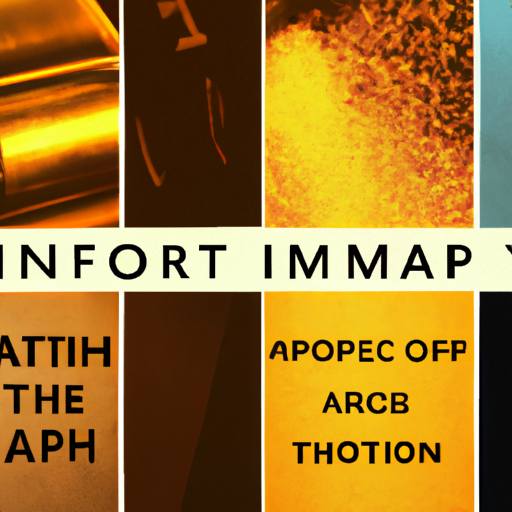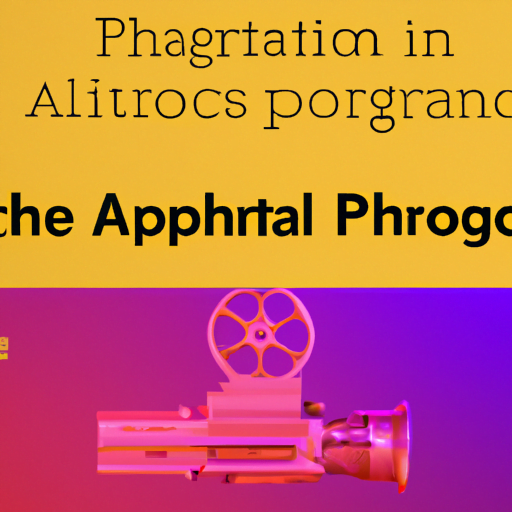
-
Table of Contents
The Impact of Typography in Documentary Film Titles

Typography plays a crucial role in the success of any film, including documentaries. It sets the tone, conveys information, and creates a visual identity for the film. In the case of documentary film titles, typography becomes even more important as it can enhance the storytelling and engage the audience from the very beginning. This article explores the impact of typography in documentary film titles and how it contributes to the overall viewing experience.
The Power of Typography in Visual Communication
Typography is not just about choosing fonts and arranging letters; it is a powerful tool in visual communication. The right typography can evoke emotions, convey meaning, and create a unique visual identity. In the context of documentary film titles, typography can set the stage for the entire film, capturing the essence of the story and attracting the audience’s attention.
Documentaries often tackle important social, political, or environmental issues. The typography used in their titles should reflect the subject matter and create a connection with the audience. For example, a documentary about climate change might use bold, impactful fonts to convey urgency, while a documentary about a historical event might use vintage-inspired typography to transport viewers to that specific time period.
Creating a Visual Identity
Documentary film titles are not just about displaying the film’s name; they are an opportunity to create a visual identity that represents the film’s content and style. The typography used in the titles can give viewers a glimpse into the film’s atmosphere and themes.
For instance, the documentary “Helvetica” directed by Gary Hustwit explores the impact of the iconic font on visual culture. The film’s title is set in the Helvetica font itself, reinforcing the connection between the subject matter and the visual representation. This choice of typography not only creates a cohesive visual identity but also communicates the film’s focus on typography and design.
Enhancing Storytelling
Typography in documentary film titles can also enhance the storytelling aspect of the film. It can provide additional context, create anticipation, or even serve as a narrative device. The way the titles are presented can influence the audience’s perception of the film and set the tone for what is to come.
For example, the documentary “Exit Through the Gift Shop” directed by Banksy uses a combination of bold, graffiti-inspired typography and playful animations to reflect the rebellious and unconventional nature of the film. The typography becomes an integral part of the storytelling, immersing the audience in the world of street art and setting the stage for the film’s exploration of art, commerce, and authenticity.
Engaging the Audience
Typography in documentary film titles can also play a crucial role in engaging the audience. It can capture attention, create intrigue, and make the film more memorable. In a world where viewers are constantly bombarded with content, typography can be the differentiating factor that makes a documentary stand out.
Take, for example, the documentary “Jiro Dreams of Sushi” directed by David Gelb. The film’s title is presented in a clean, minimalist font that reflects the precision and simplicity of the art of sushi-making. The typography, combined with beautiful cinematography, entices the audience to explore the world of Jiro Ono, a legendary sushi chef, and his pursuit of perfection.
The Role of Typography in Marketing and Promotion
Typography in documentary film titles is not only important for the viewing experience but also for marketing and promotion. The right typography can attract potential viewers, create buzz, and generate interest in the film.
When promoting a documentary, the typography used in posters, trailers, and other promotional materials should be consistent with the film’s visual identity. This helps create a cohesive and recognizable brand that resonates with the target audience.
Case Study: “Blackfish”
A notable example of the impact of typography in documentary film titles is the case of the documentary “Blackfish” directed by Gabriela Cowperthwaite. The film explores the controversial treatment of orcas in captivity and its consequences.
The typography used in the film’s title is bold, with sharp edges and a distressed texture. This choice of typography reflects the intense and emotional nature of the film, capturing the attention of potential viewers and conveying the gravity of the subject matter.
Furthermore, the typography used in the film’s promotional materials, such as posters and trailers, remained consistent with the title typography. This helped create a strong visual identity for the film and contributed to its success in raising awareness about the issue of orca captivity.
The Importance of Font Selection
Choosing the right font is crucial when it comes to typography in documentary film titles. Different fonts evoke different emotions and convey different messages. The font selection should align with the film’s subject matter, style, and intended audience.
For example, a documentary about a serious social issue might opt for a bold, sans-serif font to convey a sense of urgency and importance. On the other hand, a documentary about a personal journey or a human-interest story might choose a more delicate and handwritten font to evoke a sense of intimacy and authenticity.
Conclusion
Typography in documentary film titles is a powerful tool that can enhance the viewing experience, create a visual identity, enhance storytelling, engage the audience, and contribute to marketing and promotion efforts. The right typography can capture attention, convey meaning, and set the tone for the entire film. By carefully selecting fonts and considering their impact, documentary filmmakers can create a more immersive and impactful experience for their audience.
